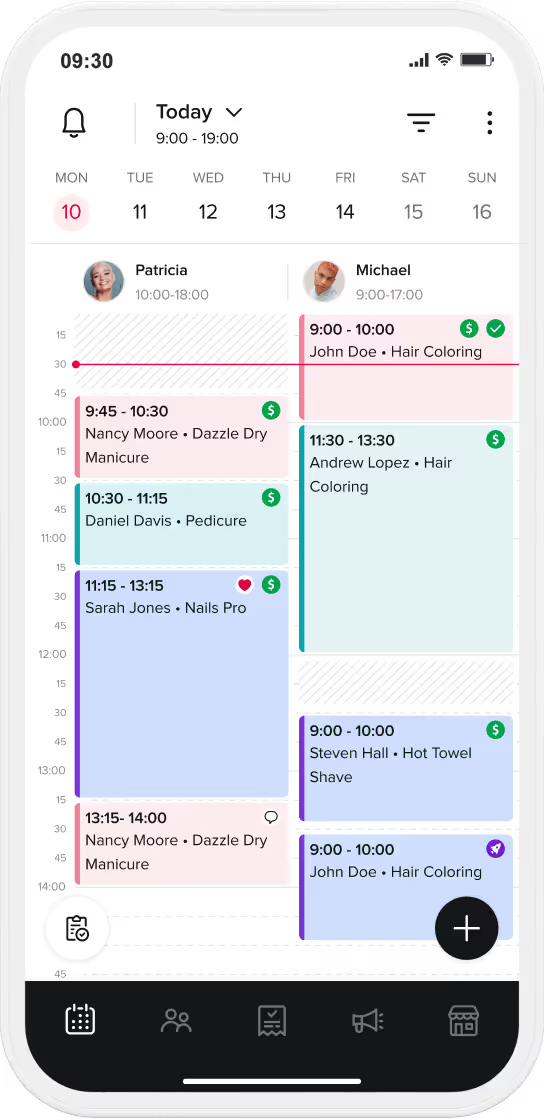

Working in the health & beauty industry has many wonderful perks and we’re sure you’re happy to be back in business. Unfortunately, close contact services are associated with a high risk of getting infected by the coronavirus, as you spend a long period of time in close proximity to another person’s face. This is why health & beauty specialists are required to work in face coverings - and not just fabric or homemade ones, but professional PPE gear that meets clearly defined safety standards. It’s important to keep in mind that from 24 September 2020 guidance stating that face coverings and visors or goggles should be worn in close contact services has become law in the UK. As for the time being, your face covering should take the form of goggles or a visor (an oftentimes reusable, clear shield that covers your entire face) and a Type II face mask (a medical mask made up of a protective 3-ply construction). Many people find that working all day with their face covered can be very uncomfortable, especially during the summer with higher temperatures. That’s why we’ve listed some top tips that’ll make your day-to-day a little easier and comfier!
Before we start discussing useful tips, let’s be very serious for a moment. If you experience severe problems with breathing, dizziness or experiencing respiratory problems after a day of working in a face covering, it’s best to begin with contacting your GP (or, if you are already being treated for respiratory illness, such as asthma – the specialist that you consult for this). If it turns out that you need a further diagnosis, you may be directed to an allergist, laryngologist or a pulmonologist – or, if there is suspicion that your problems are psychological in nature, to a psychiatrist. A doctor will be able to tell what causes your reaction to covering your face and advise on what to do to make it less severe, including the recommended course of action when it comes to abiding by the safety regulations.
A team of specialists at the pulmonology department at the Vithas Xanit International Hospital, advises the general public to take breaks when wearing face masks. It would be perfect to remove it every 45 minutes for 5 minutes. The longer you wear the covering, the longer the break should be – an hour in a mask requires 15 minutes of breathing freely, while four hours requires at least half an hour to help ease your breathing. How can you apply this tip to everyday life in a salon? If the appointment is longer than 45 minutes, you should at least make sure that you get your break after the client leaves. Although, you’ll have to disinfect the station between clients, and inhaling disinfectant fumes for 15 minutes is quite the opposite of giving your lungs a break. If you are the business owner, seriously consider setting longer breaks between appointments so that your crew will be able to not only disinfect their workplace properly, but also catch a much-needed breath (metaphorically and literally). If you’re using Booksy, you can easily add padding time to your services, which will allow you to reserve proper slots for disinfection and mask breaks. Clients will not be able to book during these times. You can set these for each type of service individually so that you can set longer breaks for more timely and demanding services and shorter ones for the simpler treatments.
It’s a great habit to exercise regularly, especially outdoors – but now it’s more important than ever to have at least a 15-minute walk daily to get your healthy dose of fresh air. The ideal situation would be to find a peaceful, quiet area – a woods, an uncrowded park, even your own garden – and wander around as often as you can with your mask off. If it is not possible, at least make sure to ventilate your household properly and spend a few minutes every day with your windows open or on your balcony, taking deep breaths. It will not only help your respiratory system, but also your mental health!
Many people find masks painful to wear for a longer period of time due to their elastic ear loops putting pressure on the ears. It’s a common problem and, fortunately, there are ways to avoid it! You can buy strap extenders you place behind your head that take the pressure off your ears. For a quick DIY solution, you can use a simple paper clip to do the same thing.
It’s a fact that wearing a face covering can cause breakouts on your skin or even irritation. This is caused by the natural oils (sebum) on our face getting heated under the mask, or a contact dermatosis when the fabric touches your skin. Even those of us who usually aren’t acne-prone may expect a breakout every now and then (oh, maskne!). What can you do about it?
This may sound ridiculous, but many problems with wearing masks can be actually caused (or made much worse) by constantly focusing on the fact that you are wearing one. Of course, once again – if you are experiencing severe respiratory issues, treat your symptoms seriously and contact a doctor. But if there are no real indications of an actual problem, it is very possible that your mindset is playing tricks on you. It is very important to keep good mental health hygiene during these trying times – take care of yourself not only physically. And try to not treat face coverings as your enemy – they are here to keep you healthy. Buy yourself a comfortable one and wear it with pride – you are being a responsible person and actually saving lives by doing so.


